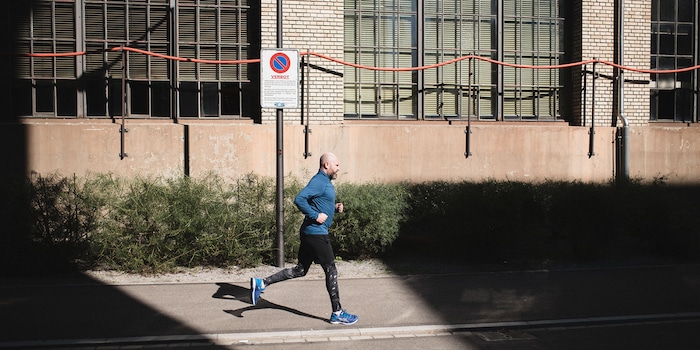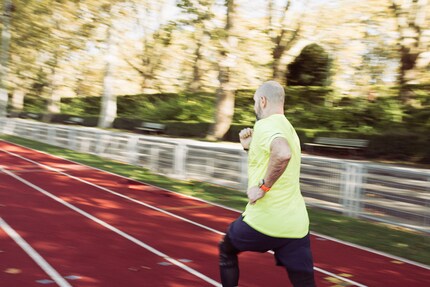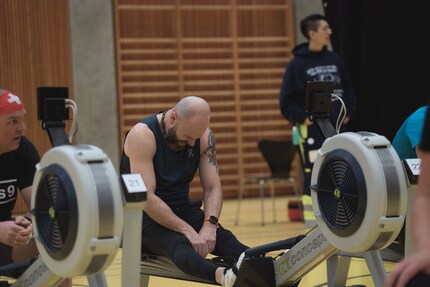
News + Trends
Sport puts up a fight
by Patrick Bardelli

The Danes run the fastest, the Portuguese the longest. The French like to jog in the countryside, while the Swiss put on their trainers at ten o'clock at the weekend. Here are a few fun facts about jogging.
Last week, Garmin published data on the habits of its users in six European countries during the lockdown.
As they stand, these figures are not very digestible. Sport in general, and running in particular, is all about experiencing the senses. As a result, I set out in search of tangible facts that smell of athletes' sweat rather than that of dusty accountants. It was on the sites of Polar and Suunto that I found this data, which relates to the years 2018 and 2019.

According to Sunnto, it's the Portuguese who run the longest; they're the only ones to cover more than 10 km per race and 10.3 km on average. Well done to them! The French are in pole position among Polar users, with an average of 9.1 km per jog. In the world of Polar training, almost half of users run between 5 and 10 km.
5 min 11 sec per kilometre: Danes using Suunto are the fastest. With a Polar on their wrist, these Vikings come in third place with an average of 6 min 35 sec per kilometre, just behind the faster Poles, who clock in at 6 min 22 sec. So do we generally run faster and further with Suunto or do we, with Polar, get more accurate measurements?
A Eurostat survey shows that Danes are not only fast, but are often up and down more than any other European citizen. Apparently, sporting activity is an essential part of Danish culture, with locals cycling around on the famous network of cycle paths or stretching their legs along the coast.
In Hong Kong and Norway, climbs and descents are apparently legion; per race, joggers in the Pearl of theOrient climb an average of 133 metres and descend 141; in Norway, the average ascent is also 133 m for 129 m of descent. On average, you end up eight metres higher in Hong Kong after the race, while in Norway you land four metres lower than at the start.

According to Suunto, the French love trail running, i.e. running in a natural environment. If we compare their training on trails or tracks to that on treadmills, the ratio in France is 12.9:1, or almost 13 times more trails than treadmills. In the USA, by comparison, the ratio was 1.6:1, and in Spain 4.8:1. Perhaps the French like to run off the beaten track, because they're stubborn people? Or perhaps it's due to their national brand, Salomon, which specialises precisely in trail running? Or, it could also be that whoever has the equipment simply goes for it. Ah those French!
Lambda Polar users are Sunday runners, except in Finland and Norway where Mondays are favoured. These joggers often make the No. 1 beginner's mistake and start out too fast. They run an average of 53 minutes, half of which is in the anaerobic or red zone. In this case, the body converts oxygen-deprived carbohydrates into energy through lactic acid fermentation, producing lactate. In the jargon, this is referred to as over-acidified legs.
However, it's not as if they weren't prevented. Ultimately, most people run to lose kilos. To achieve this, aerobic running at a low heart rate would be just the thing. For the red zone, only experienced athletes can flirt with.
Whether you have a high or low heart rate, in Switzerland people prefer to run at ten o'clock at the weekend and at eighteen o'clock during the week. It's quite the opposite in Costa Rica, where early risers are legion. At weekends, Costa Ricans draw their trainers for their jog at seven o'clock, on weekdays at six.
On average, people with a connected Smartwatch played 4.3 different sports over the course of the year. Some of them, however, indulge in many more activities still. The record is 74 different sports for a single user! Running is the most popular activity, followed by walking and cycling. Men are more likely to walk than women, according to Suunto's analysis. Men take an average of 9446 steps a day, women 7969. Come on ladies, don't let men get the better of you!
Bref, as my colleague Dominik Bärlocher would say: I'm done, I'm going on break. I've earned it.

In the meantime, head over to my author profile to read more super interesting articles.
From radio journalist to product tester and storyteller, jogger to gravel bike novice and fitness enthusiast with barbells and dumbbells. I'm excited to see where the journey'll take me next.
Interesting facts about products, behind-the-scenes looks at manufacturers and deep-dives on interesting people.
Show all